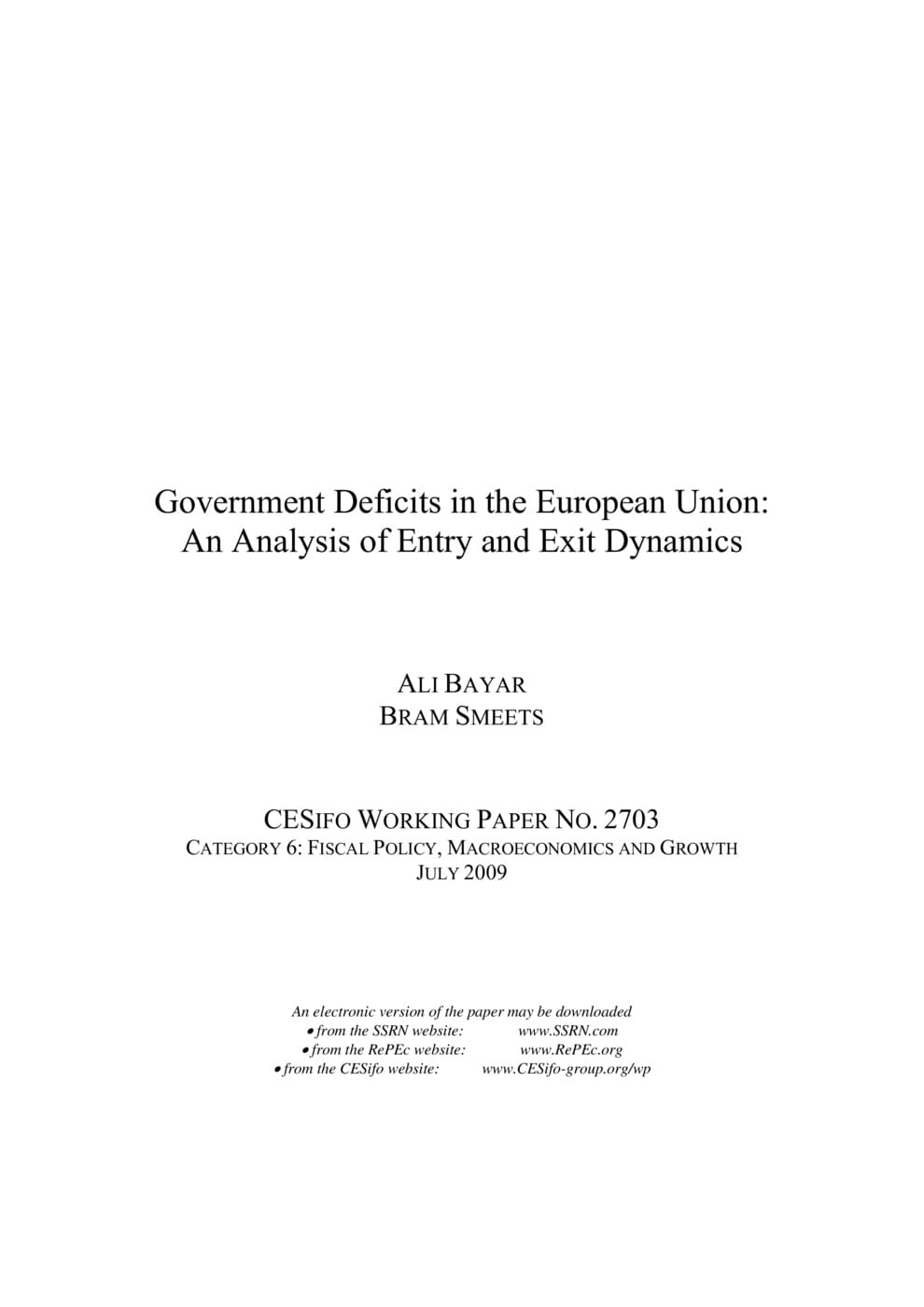Government Deficits in the European Union: An Analysis of Entry and Exit Dynamics
CESifo, Munich, 2009
CESifo Working Paper No. 2703

The extent of government deficits and debt has been one of the most debated issues in recent years. However, much less has been contributed about their dynamics. Yet, the issue of entering into and exiting from excessive deficits is critical in the Economic and Monetary Union since the Stability and Growth Pact rules out deficits larger than 3 percent of GDP, unless countries face strictly defined unusual conditions. This paper provides a transition data analysis of the dynamics of public deficits. It shows the asymmetric role played by the economic determinants in these dynamics and estimates the evolution of the probability of entering into and exiting from excessive deficits for every individual member state of the European Union that signed the Maastricht Treaty, since 1970. It also reveals how the concurrence of some minor changes may produce a major switchover in public finance outcomes. Finally, it analyses the evolution over time of the probabilities that countries will enter or escape from the state of having excessive deficit, and hence the fragility of some countries even if they are now out of excessive deficits.
Fiscal Policy, Macroeconomics and Growth